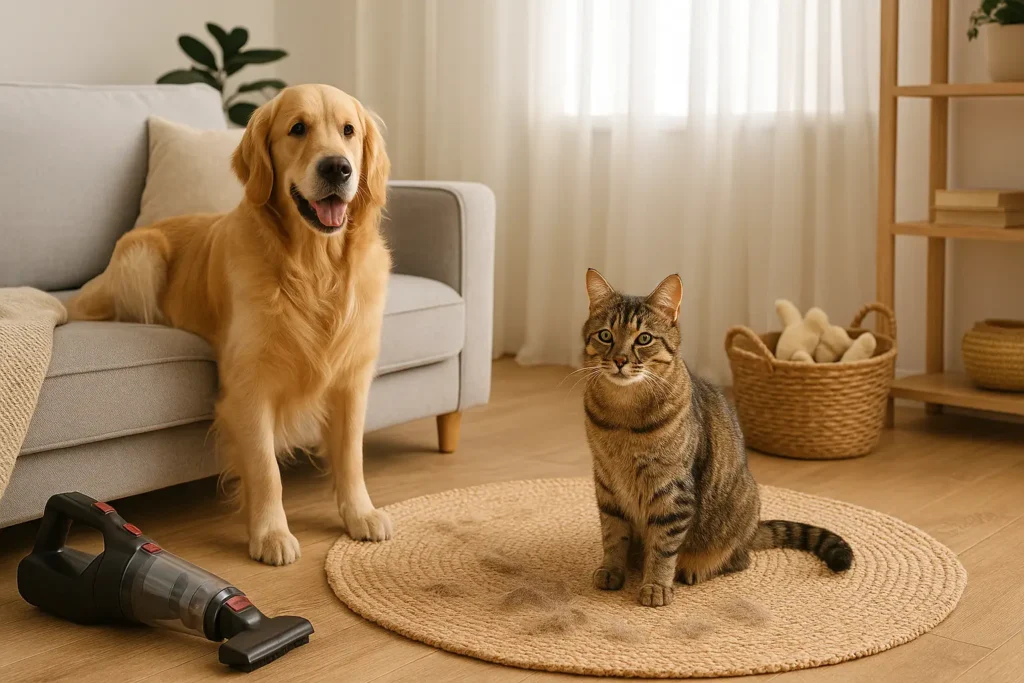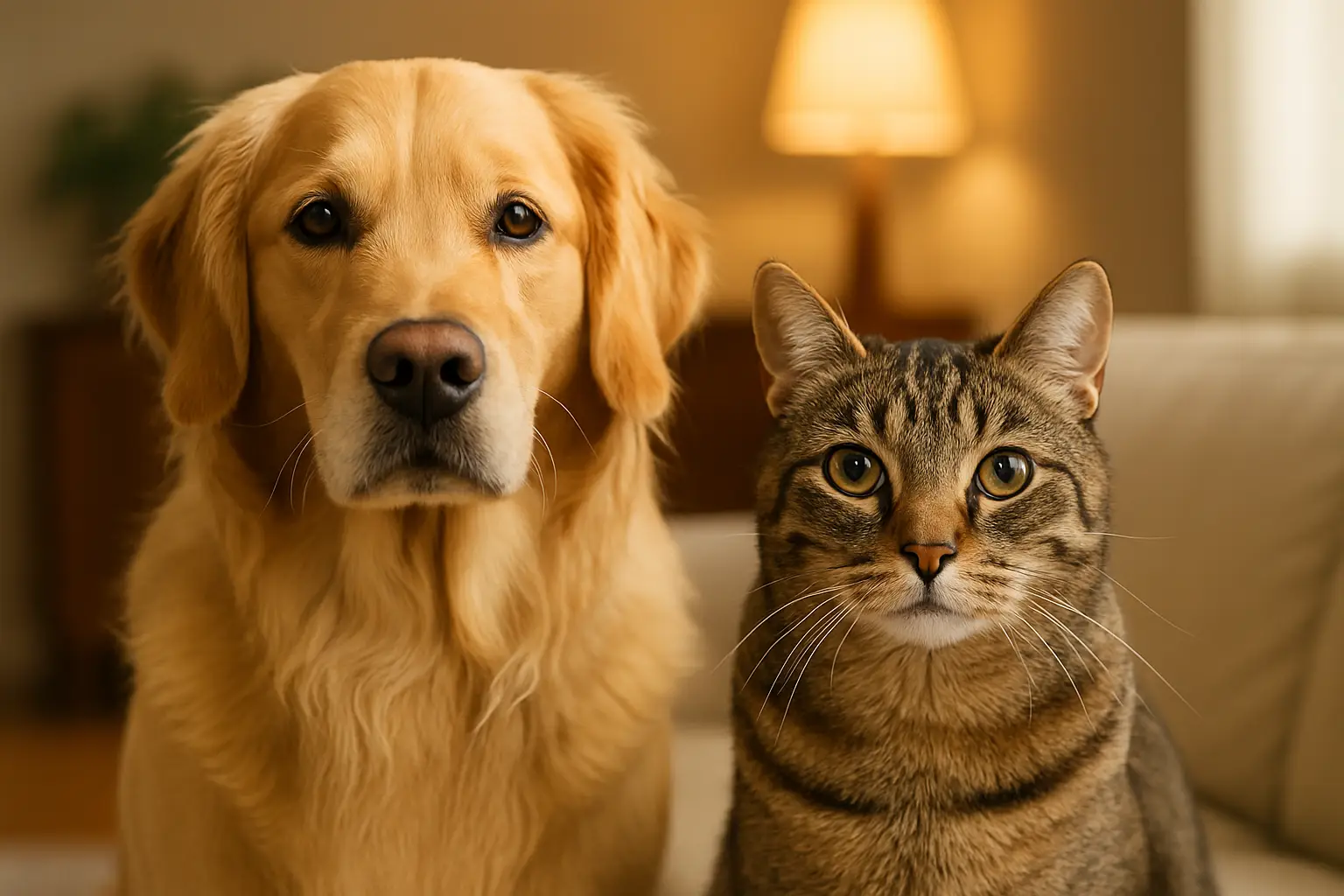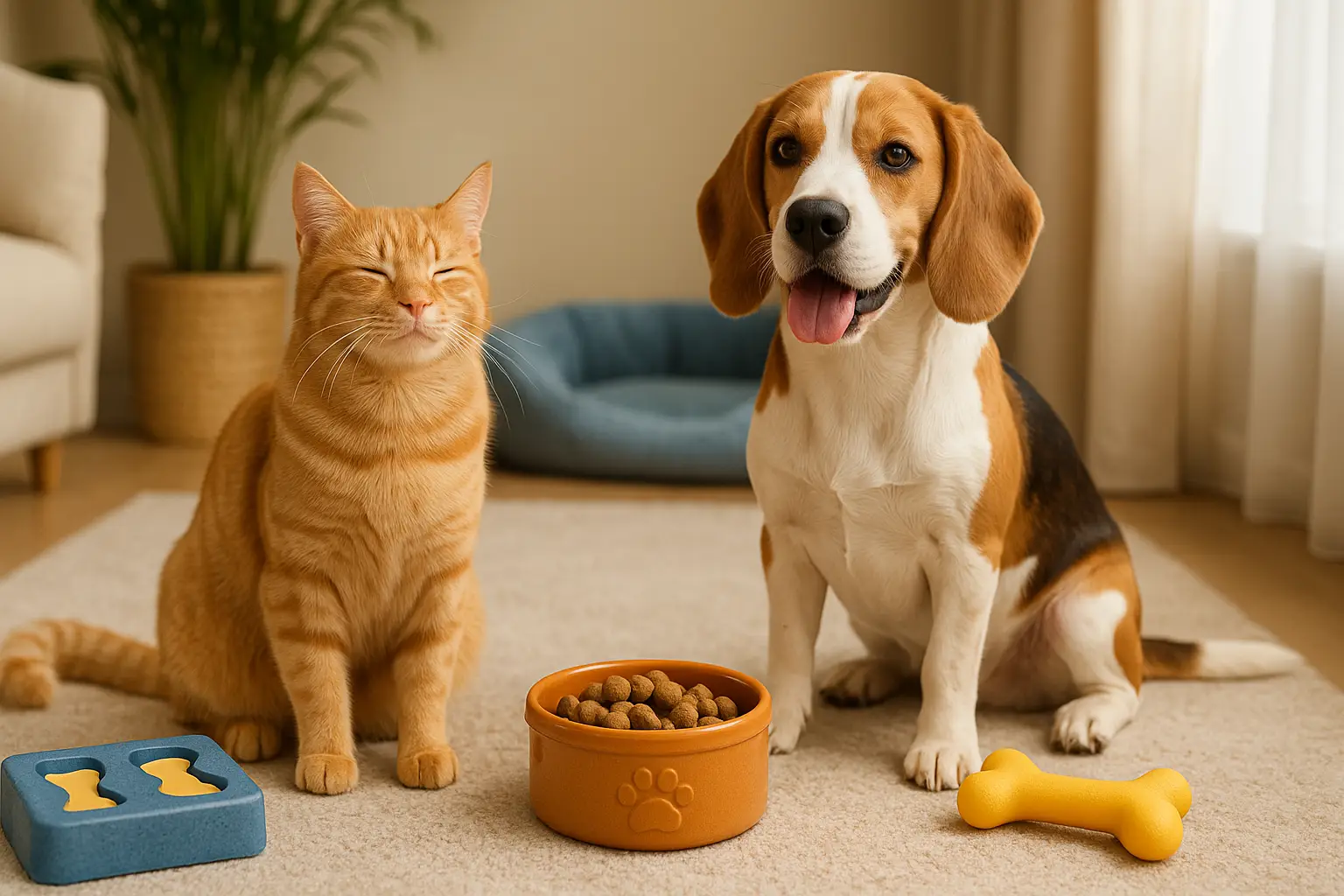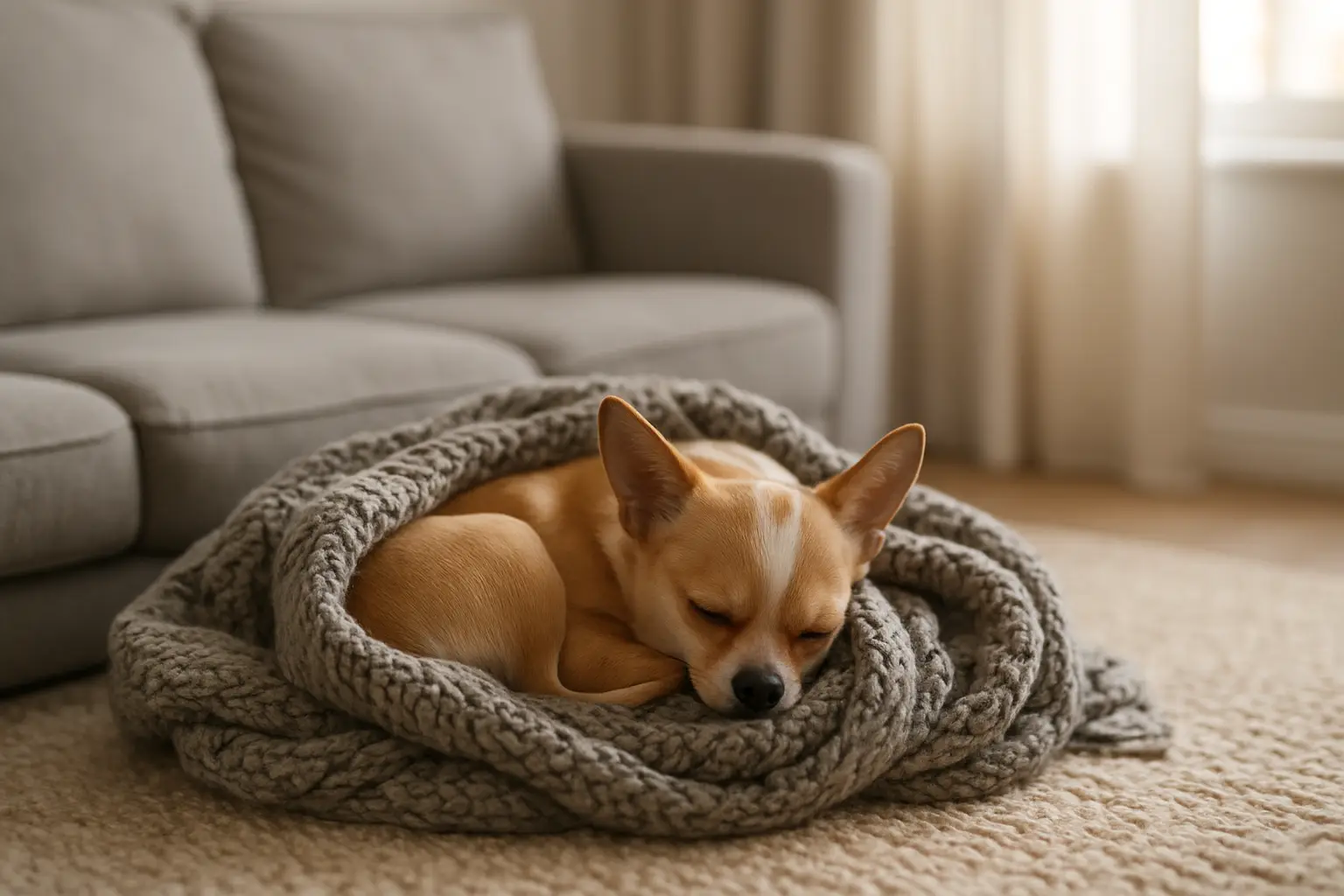How to Keep Your Home Clean and Fresh While Living with Pets

Living with pets is one of life’s greatest joys. But let’s be honest—it also means fur on the furniture, paw prints on the floor, and the occasional mysterious smell that seems to come from nowhere. The good news is, you don’t have to choose between a cozy home and a clean one.
A home shared with pets can absolutely be clean, fresh, and inviting—without being sterile or stressful. It just takes a bit of intentional planning, smart routines, and a mindset shift. Rather than trying to fight nature, the goal is to work with your pet’s rhythms in a way that supports a beautiful living environment.
In this guide, we’ll explore how to maintain a clean home with pets in a way that feels effortless, sustainable, and respectful to the animals we love so much. Whether you share your space with an energetic dog, a laid-back cat, or both, you’ll find plenty of real-world advice that works for busy, modern life.
Embracing the Mess Without Losing Control
First things first: perfection isn’t the goal. Your home is lived in, and that includes fur, movement, toys, and the occasional muddy paw. The goal isn’t to eliminate all evidence of your pet—it’s to manage it in a way that’s healthy and harmonious.
Part of maintaining a clean home with pets is adjusting your expectations. A beautifully maintained home doesn’t have to look like a magazine cover—it just has to feel fresh, comfortable, and functional for both you and your animals.
So instead of trying to erase all signs of your pet’s presence, consider designing your cleaning habits around supporting their life in the home.
The Power of a Pet Cleaning Routine
One of the best ways to stay ahead of pet-related mess is to create gentle, regular habits. A little bit of maintenance every day goes a long way toward preventing the buildup of fur, dander, odors, and debris.
Try choosing a few daily, weekly, and monthly habits that align with your lifestyle. Daily habits might include a quick vacuum in your pet’s favorite spot or wiping muddy paws. Weekly habits can focus on deeper cleaning, like washing pet bedding or mopping high-traffic areas. Monthly routines might include cleaning behind furniture or detailing litter box setups.
Rather than seeing cleaning as a chore, reframe it as part of your care routine—just like feeding, grooming, or walking your pet.
Choosing Pet-Friendly Furniture and Surfaces
The materials in your home play a huge role in how easy it is to keep clean. Some fabrics and finishes are magnets for fur, odors, and scratches, while others naturally resist wear and wipe down easily.
Opt for leather or faux leather sofas if you want something stylish and simple to maintain. If you prefer fabric, go for tightly woven options like microfiber, which resist pet hair and are easier to clean than textured or loose-weave materials.
Hard surface floors like tile, luxury vinyl, or sealed hardwood are much easier to keep clean than carpets. If you do have rugs or carpeting, choose low-pile varieties and commit to regular vacuuming. Consider machine-washable rugs in high-pet-traffic zones—they’re game changers.
When decorating, keep in mind how your pet interacts with the space. Will your dog be lounging on the couch? Do your cats love to perch on the windowsill? Set things up with them in mind, not just as an afterthought.
Smart Solutions for Managing Pet Hair
Pet hair is one of the biggest cleaning challenges—especially during seasonal shedding periods. But with a few strategic habits and tools, you can keep it from taking over your life.
Start with regular grooming. Brushing your dog or cat frequently (ideally every day, or at least several times a week) removes loose hair before it lands on your floors and furniture. Choose a brush or grooming glove that matches your pet’s coat type, and make grooming a bonding experience.
Invest in a high-quality vacuum with a HEPA filter and strong suction specifically designed to handle pet hair. Consider adding a handheld vacuum or stick vacuum for daily quick cleanups.
Lint rollers, reusable pet hair remover tools, and even rubber gloves can help lift hair from upholstery and curtains. For clothes, use dryer sheets or pet-specific laundry boosters to remove fur more effectively.
It’s not about eliminating every strand of fur—it’s about staying ahead of it in manageable, low-stress ways.
Controlling Odors Naturally and Effectively
Every home has a scent. With pets, it can be warm and welcoming—or slightly funky if you’re not careful. The key to controlling pet odors is staying proactive and choosing natural, non-toxic solutions.
Keep litter boxes, food bowls, and bedding areas as clean as possible. Scoop litter boxes daily and replace litter at least once a week. Wash pet beds, blankets, and soft toys regularly—ideally once a week or every two weeks.
Air circulation makes a huge difference. Open windows when you can, and use fans or air purifiers to keep the air fresh. Choose HEPA filters that reduce dander, fur, and odor particles.
Avoid using heavy fragrances or chemical sprays to mask smells. Instead, try natural odor eliminators like baking soda, vinegar, or essential oil sprays (pet-safe only—avoid tea tree, citrus oils, and eucalyptus). You can also use houseplants like spider plants or bamboo palms, which help purify the air naturally.
With consistent upkeep, your home can smell fresh, earthy, and clean—just like it should.
Keeping Floors Cleaner for Longer
Pets spend most of their time on the floor, which means dirt, hair, dander, and whatever they track in from outside ends up right underfoot. Keeping your floors clean helps your whole home feel instantly fresher.
Place washable mats or rugs at entry points to catch debris before it spreads. Teach your dog to pause on the mat or wipe their paws (yes, they can learn it!) when coming inside.
Wipe paws with a damp cloth or paw-cleaning mitt after walks. For rainy days or muddy outings, keep a towel near the door or install a small pet-cleaning station if space allows.
Vacuum high-traffic areas daily or every other day if you have heavy shedders. Use a damp mop weekly with a non-toxic, pet-safe floor cleaner to keep things hygienic.
If your pet has accidents or spills water frequently, keep towels or absorbent mats handy. Preventing stains before they set is much easier than treating them later.
Streamlining Toy and Gear Organization
Pet toys, leashes, collars, grooming tools, and accessories can easily take over your space if not contained. Create systems that make it easy to grab what you need—and put it away when you’re done.
Designate a bin, basket, or low shelf for toys in the room where your pet spends the most time. Rotate toys weekly to keep things interesting while preventing clutter. Toss broken or unwashed toys regularly.
Use wall hooks or over-the-door organizers for leashes, jackets, harnesses, and waste bags. Keep grooming supplies in a small caddy or drawer in a closet or bathroom.
Labeling bins and creating visual organization makes it easier to stay on top of things. It also prevents the chaos of digging through random drawers when you need nail clippers or your dog’s coat.
A clean home isn’t about having less—it’s about having a place for everything.
Litter Box Tips for a Cleaner, Healthier Home
Cats are naturally clean creatures, but litter boxes can become a major cleanliness challenge if not handled well.
Start with the right number of boxes: one per cat, plus one extra. Place them in low-traffic, quiet areas with some privacy but not total isolation. Avoid putting litter boxes near food or water bowls.
Scoop daily—no exceptions. Replace litter weekly, and wash the box with mild soap and hot water every one to two weeks. Avoid bleach or ammonia-based cleaners.
Choose a high-quality litter that clumps tightly and controls odor without heavy fragrance. Consider enclosed or high-sided boxes if you have kickers, but only if your cat doesn’t mind the confinement.
Add a washable mat beneath the box to trap loose litter and make cleanup easier. Keep a small dustpan nearby for daily sweeps.
A well-maintained litter area not only keeps your home fresh—it supports your cat’s health and happiness too.
Managing Pet-Related Laundry
Blankets, towels, pet clothes, and your own clothing can quickly get coated in fur or develop stubborn smells. Creating a system for regular laundry keeps things manageable.
Use dedicated pet bedding that’s easy to remove and wash. Opt for removable covers on beds and furniture. Keep a separate laundry hamper or basket for pet items.
Wash pet fabrics with hot water, a strong detergent, and a deodorizing booster like baking soda or white vinegar. Avoid fabric softeners, which can irritate sensitive skin.
If your washing machine tends to hold odors, run a cleaning cycle with vinegar or a machine-cleaning tablet once a month.
Dry items thoroughly, and use dryer balls or dryer sheets made for pet hair to reduce static and shedding.
Stay ahead of the cycle by doing smaller, more frequent loads rather than letting fur and odor build up over time.
Decorating with Style and Cleanability in Mind
You don’t have to sacrifice style just because you live with animals. Choose furniture and décor that reflects your aesthetic—while also supporting a low-maintenance lifestyle.
Go for washable slipcovers on sofas and armchairs. Use dark or patterned fabrics that hide minor stains or fur between cleanings. Keep blankets or throws on furniture where pets are allowed, and choose stylish options that double as protective covers.
Display framed pet photos or pawprint art as part of your décor—it adds personality and celebrates your life together. Use woven baskets for stylish storage of pet gear, or choose a litter box enclosure that looks like a side table or bench.
Blend function and design so your home feels like a cohesive space—not a kennel or cattery.
Final Thoughts: Clean Doesn’t Have to Mean Complicated
Living with pets can be beautifully messy—but that doesn’t mean you have to live in chaos. By integrating a few smart habits, choosing pet-friendly materials, and creating a cleaning rhythm that fits your lifestyle, you can enjoy the best of both worlds: a home full of love and a space that feels clean, fresh, and truly yours.
It’s not about perfection—it’s about flow. About choosing tools and routines that make things easier, not harder. About designing a home that’s not just pet-allowed, but pet-intentional.
Because when your environment supports everyone living in it—including the four-legged family members—your whole home breathes easier.




Post Comment